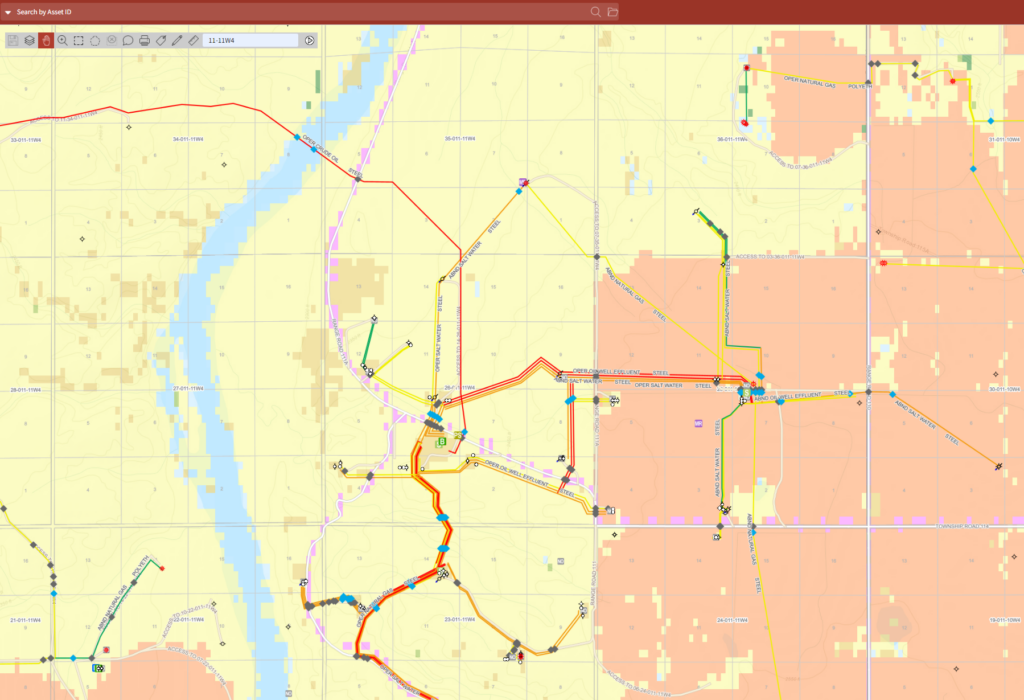Closure, including abandonment, reclamation, and remediation, is an important part of a project’s life cycle for assets including pipelines, wells, and facilities. As Canadian companies face ageing infrastructures, and regulations from multiple governing bodies that are in constant change, the closure stage within an asset’s life cycle consistently gets more complex and costly.
The key to successfully create an abandonment plan starts with design and planning driven by expertise and a thorough understanding of requirements (environmental and regulatory), access to accurate data and the complete picture of a licensee’s assets with an easy-to-use solution to enable the execution.
Environmental regulations weave a complex web as it incorporates multiple governing bodies’ rules and regulations. These rules change, making it a challenge to keep up to ensure compliance and securing future licensing for new projects, and incorrect filings result in complications, fines, and more.
Regulators are increasing the pressure and expectations on closures to diminish the aging asset problem impacting our environment. The federal government and provincial governing bodies in Alberta, British Columbia, and Saskatchewan have provided funds and grants to encourage and support reclaiming assets as closure spend grows year over year.
For example, the AER saw a drop in numbers of orphan wells because of federal funding for abandonment and reclamation work with Directive 88, created to reduce inactive wells and ensure timely reclamation. These directives encourage companies to stay on top of reclamation projects that can protect licensee ratings for future approvals, avoid regulatory, and prevent costs of abandoning and reclaiming non-producing oil wells from escalating.
In British Columbia, permitters need to submit annual reclamation reports to their governing bodies to show proof of returning areas to a safe state, and in the case of mining, security deposits are taken and only returned when a site has been reclaimed as per expectations. The intent of the BC government is to rely less on public funds for closure activities.
Saskatchewan’s Acknowledgement of Reclamation program ensures reclamation obligations are met and includes an annual audit of reclaimed sites to determine that abandonment and reclamation standards continue to be met.

GDM Converge Showing Land Use, water crossings, and pipeline risk consequence (baseline) layers to identify ageing infrastructure and regulatory history.
In speaking with the industry, they believe the key to thorough planning and execution on abandonment and reclamation projects relies on data, which isn’t surprising that it is also one of the biggest challenges to overcome. Mostly the data is incomplete or provided in a variety of formats, which is not helpful in formations that are notoriously difficult to work with.
Having access to the trusted and accurate data, both current and historical, across all Canadian provinces means that project planning can be consistent, and companies can focus on the strategic plan and getting the work done, rather than its data administrative challenges. Accessing high-quality data helps in preventing cost overruns simply by ensuring companies are always working in the right area have trouble-free field work, and more importantly, are confident that theirs risks are being managed.
There are companies that have the resources to manage these projects in-house, but there are many that require a third party’s expertise to manage this part of their business. From engineering and planning, liability management, and environmental assessments their sole purpose is to understand how best to identify, manage, and mitigate current and future risks and liabilities for their clients, and make sure they are compliant with regulations. Whatever a company’s size and strategic plans, it is access to complete, accurate, and trusted information that drives focus on completing reclamation and remediation projects quickly and effectively.



